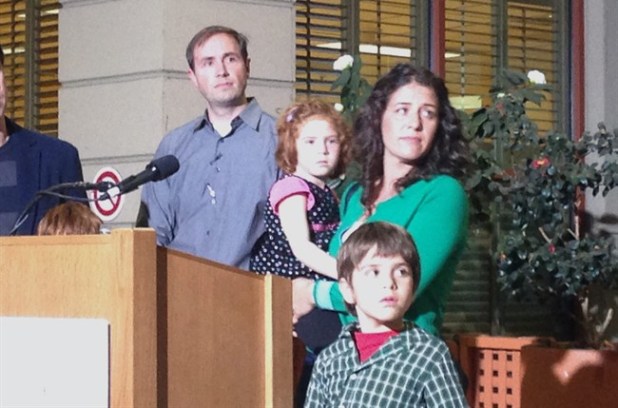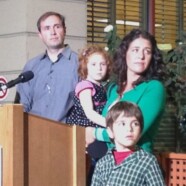Mysterious Polio-Like Illness
An extremely rare, polio-like disease has appeared in more than a dozen California children within the past year, and each of them suffered paralysis to one or more arms or legs, Stanford University researchers say. But public health officials haven’t identified any common causes connecting the cases.
The illness is still being investigated and appears to be very unusual, but Dr. Keith Van Haren at Lucile Packard Children’s Hospital at Stanford University warned Monday that any child showing a sudden onset of weakness in their limbs or symptoms of paralysis should be immediately seen by a doctor.
“The disease resembles but is not the same as polio,” he said. “But this is serious. Most of the children we’ve seen so far have not recovered use of their arm or their leg.”
But doctors are not sure if it’s a virus or something else, he said. Dr. Van Haren says he has studied five cases from Monterey up through the San Francisco Bay Area, including two who were identified with the disease enterovirus-68, which is from the same family as the polio viruses. He said there have been about 20 cases statewide.
“We want to temper the concern, because at the moment, it does not appear to represent a major epidemic but only a very rare phenomenon,” he said, noting similar outbreaks in Asia and Australia.
But for some children, like Sofia Jarvis, 4, of Berkeley, rare doesn’t mean safe.

Jessica Tomei holds her daughter, Sofia Jarvis, one of a handful of California children who has been diagnosed with a rare polio-like syndrome that has left her arm paralyzed. – Martha Mendoza/AP
She first developed what looked like asthma two years ago, but then her left arm stopped moving, and has remained paralyzed ever since.
“You can imagine. We had two boys that are very healthy and Sofia was healthy until that point,” said her mother Jessica Tomei. “We did not realize what we were in store for. We did not realize her arm would be permanently paralyzed.”
Dr. Van Haren, who diagnosed Sofia, said polio vaccines do not protect children from the disease, but stressed that it is still important for children to receive that vaccine.
Any of a number of illnesses could be at work, and it’s possible some of the cases had one infection and some had another. Regarding the presence of EV-68 in at least two cases, “it could be an incidental finding,” Seward said.
The California Department of Public Health has not identified any common causes that suggest that the cases are linked, said Dr. Gil Chavez, the deputy director of the Center for Infectious Disease and state epidemiologist.
“Physicians and public health officials who have encountered similar illnesses have submitted 20 reports to CDPH, and CDPH has conducted preliminary tests on 15 of these specimens,” he said. “Thus far, the department has not identified any common causes that suggest that the cases are linked.”
UC San Francisco neurology professor Emmanuelle Waubant said they believe, but don’t have proof, that it’s a virus that for most children shows up only as a benign cold. She said a few children, due to their biological makeup, are having much more serious symptoms and she hoped doctors would look for them.
“For a lot of the neurologists who have trained in the last 30 years, it’s extremely rare to see polio or polio-like syndrome,” she said.
By Martha Mendoza/The Associated Press

